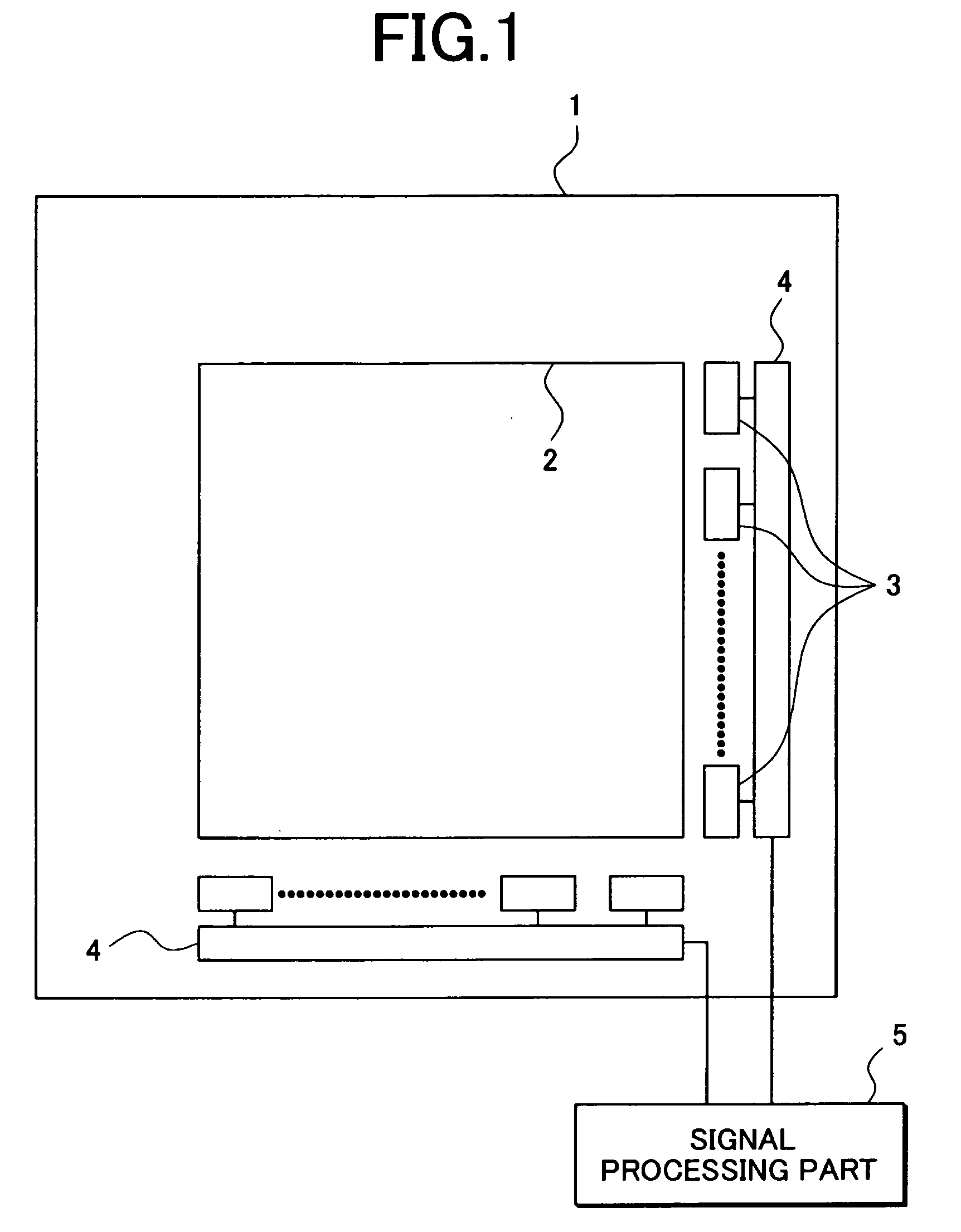Display device
a display device and display technology, applied in the field of display devices, can solve the problems of inconvenient carrying of the mouse, occupying space, and difficulty in disposing of the numerous icons thereon, and achieve the effects of facilitating operation, reducing noise from the outside environment, and reducing the number of display devices
- Summary
- Abstract
- Description
- Claims
- Application Information
AI Technical Summary
Benefits of technology
Problems solved by technology
Method used
Image
Examples
example 1
[0040]FIG. 2 is a perspective view showing an example (Example 1) in which the present invention is applied to a liquid crystal display device. FIG. 3 is a schematic sectional view of a liquid crystal display device showing a section along line A-A in FIG. 2. The liquid crystal display device comprises a liquid crystal display panel and back lighting 50. The liquid crystal display panel comprises a TFT substrate 10 on which TFTs for controlling the pixels, pixel electrodes, and the like are formed, a color filter substrate 20 on which color filters and the like are formed, and a liquid crystal which is sandwiched between these substrates. The liquid crystal 30 is sealed between the TFT substrate 10 and the color filter substrate 20 by a sealing member 31.
[0041]The back lighting 50 comprises a light source such as an LED or the like, and a variety of optical sheets which concentrate light in the direction of the liquid crystal display panel. The light from the back lighting 50 is con...
example 2
[0088]In this example, the photosensor TFTs 130 used as photodiodes have a construction similar to that of the pixel part TFTs 120, and also offer the advantage of allowing manufacture by the same process. However, compared to cases in which these are manufactured exclusively for use as photosensors, there may be instances in which the photo-sensitivity is insufficient. In Example 2, the amount of change in the photo-electric current can be detected more easily in such cases as a result of photosensor TFTs 130 being connected in parallel.
[0089]FIG. 17 shows an equivalent circuit of the photosensor part 3 in Example 2. In the equivalent circuit shown in FIG. 17, photosensor TFTs 130 used as photodiodes are connected in parallel, and correction sensor TFTs 133 are connected in series with the respective photosensor TFTs 130. The photosensor TFTs 130 and the correction sensor TFTs 133 connected in series with the photosensor TFTs 130 are disposed in close proximity to each other, and t...
example 3
[0092]As is shown in FIG. 8, the display device of the embodiment of the present invention is a display device in which photosensor TFTs 130 are disposed in correspondence with photosensor windows (windows 24) formed on the outside of the effective screen part 2, and the variation in the light by touching the windows 24 with a finger is detected. In this case, if the windows 24 are large, noise tends to be picked up. For example, even in cases where the sensor part 3 for selecting another function is touched with a finger, there may be instances in which the shadow of the fingers or the like is detected, and a signal is output. On the other hand, in cases where the windows 24 formed in the photosensor parts 3 are large, there may be a problem in terms of the deterioration of the external appearance of the display as a whole as a result of the generation of reflected light from the metal electrodes, e.g., gate electrodes, source electrodes, drain electrodes, and the like, formed in t...
PUM
 Login to View More
Login to View More Abstract
Description
Claims
Application Information
 Login to View More
Login to View More - R&D
- Intellectual Property
- Life Sciences
- Materials
- Tech Scout
- Unparalleled Data Quality
- Higher Quality Content
- 60% Fewer Hallucinations
Browse by: Latest US Patents, China's latest patents, Technical Efficacy Thesaurus, Application Domain, Technology Topic, Popular Technical Reports.
© 2025 PatSnap. All rights reserved.Legal|Privacy policy|Modern Slavery Act Transparency Statement|Sitemap|About US| Contact US: help@patsnap.com



